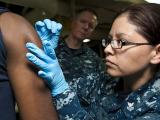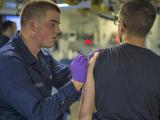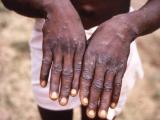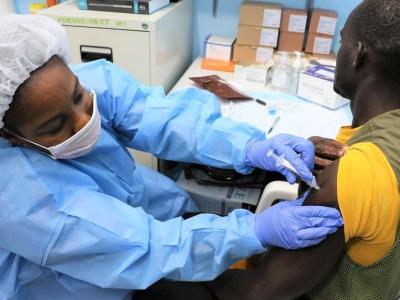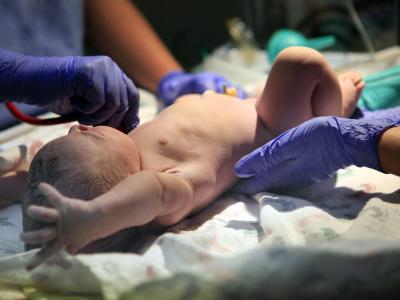Jun 18, 2003 (CIDRAP News) The number of suspected cases of human monkeypox in Wisconsin, where the outbreak was discovered, has begun to drop off, according to Herb Bostrom, director of the Wisconsin Bureau of Communicable Diseases.
Today the state has 31 suspected cases, down from 37 yesterday, Bostrom told CIDRAP News. "We removed six suspect cases, because the clinical progression of their disease didn't fit the description of monkeypox," he said. Seven Wisconsin cases have been confirmed by laboratory tests, for a total of 38 confirmed and suspected cases.
Nationally, the Centers for Disease Control and Prevention (CDC) today reported 21 confirmed monkeypox cases and 72 suspected cases. The latter number included yesterday's count of 37 suspected cases in Wisconsin. The totals listed by the CDC for other states were 24 in Indiana, 19 in Illinois, 4 in Ohio, and 1 each in Missouri and Kansas. CDC spokeswoman Katie Hoskins said 12 people are or were hospitalized because of the disease.
In addition, six suspected cases have been reported in Kentucky, according to a report today in the Louisville Courier-Journal. One case had been reported in a boy in New Jersey last week, but that reportedly turned out to be a different illness.
The current national case count is several times greater than the 19 suspected cases that were reported when the CDC first publicized the outbreak on Jun 7. The disease spread to humans from pet prairie dogs, which are suspected to have been infected by a Gambian giant rat or other African rodents at Phil's Pocket Pets of Villa Park, Ill.
Last week Wisconsin officials reported they were looking into two possible cases of person-to-person transmission of monkeypox, though they said the cases didn't appear to fit the disease profile very well. Preliminary laboratory tests by the CDC last weekend were negative for monkeypox, state officials reported in a Jun 16 news release. Bostrom said today it will be weeks before the cases can be definitely ruled out.
"We have to do the acute and convalescent sera [tests] and look for antibody change," he said. The CDC is doing the testing. Meanwhile, the two healthcare workers who had the suspected cases have recovered, Bostrom said.
Human monkeypox usually results from exposure to infected animals, but person-to-person transmission occasionally occurs. In an outbreak in the Congo in 1996 and 1997, about 8% of household contacts of case-patients contracted the illness, according to CDC data.
Few people so far have taken advantage of the availability of smallpox vaccinations to prevent monkeypox. The CDC recommended Jun 12 that people with potential exposure to the disease be offered smallpox vaccine, which was said to be about 85% effective in preventing monkeypox. The CDC was aware of just seven people who have received smallpox shots to prevent monkeypox, Hoskins said today.
In five smallpox vaccination clinics that were offered in Wisconsin, only 12 people were vaccinated, according to Bostrom. "Twelve individuals have both been eligible by the CDC recommendations and were willing after reading the materials" describing the risks of the vaccine, he said.
Human cases of monkeypox were first identified in the Congo (then called Zaire) in 1970 and were never seen in the Americas before the current outbreak. The disease resembles smallpox, producing a fever, rash, and other symptoms, but is milder. Case-fatality ratios in Africa are reported to range from 1% to 10%, but no deaths have been reported in the current outbreak.
See also:
CDC monkeypox site
http://www.cdc.gov/ncidod/monkeypox/index.htm
Wisconsin Department of Health and Family Services monkeypox page
http://dhfs.wisconsin.gov/communicable/MonkeyPox/

